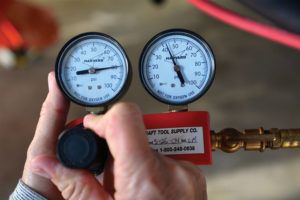
We pretty much all know the drill. You’re starting yet another condition inspection and the hangar is a mess. The wheel pants are stuffed under the table in the corner, and because there’s no room to lay it flat, the cowling squats on edge on the floor, looking like it might topple over the next time the breeze decides to give a big puff around the open hangar door. What looks like a Craftsman starter kit of wrenches and ratchets lies like tinsel on the wings, which themselves are protected by the old beach towels you and that gal you married used to lay on up at the lake. Inspection hole covers and old tuna cans full of screws fill in between the tools while all that junk that lives in the cockpit, the old charts, clipboard, checklists, flashlights, and the never used in 30 years barf bags are piled on the table the wheel pants are hiding under. An unopened case of oil sits a little too cleanly, un-smudged and suspiciously prominent on the floor in front of the engine.
And there you stand facing the valve covers, the leak-down tester cradled in your left hand while your right thumb sits over the adapter in the cylinder’s spark plug hole. Your buddy flips the prop two times, and the piston starts pushing air out of the adapter, lifting your thumb and with more assertiveness than seems polite, just like it always does. You’ve done this how many times, and still the whooshing force behind the air off a rising piston is enough to get your notice.
The whooshing slows, and your buddy backs off his prop turning until he creeps up on the impulse coupling. Clack! You’re pretty close to top center, and your helper shifts his casual stance to a determined placement of the feet and a wrestling hold on the prop.
“Ready?”
“Ready.”
And with that, your right hand moves to the little lever that lets air into the tester. It’s a sticky little thing that doesn’t endear you to the tool, but you do your best to slowly rotate the handle 90 degrees. Halfway there, the instrument’s needles jump as air madly hisses then sighs into the cylinder; in the distant background you hear the muffled yet still vaguely metallic thunk of the piston tilting against the far wall of its cylinder prison. Your buddy remains steadfastly wrapped around the prop, waiting.
You look down at the instruments, and instantly energy drains down your body as if bomb bay doors on the soles of your feet had opened and the concrete floor were a sponge. The first needle is pointing nearly at 80, just as you knew it would, but the other is barely in the 40s. For an instant your thoughts and a solitary word go blue.
“Back it up a bit and see what you get.” Your buddy pulls back on the prop with the sort of seriousness you hadn’t seen since your days on the explosive ordnance detail. The needles drop on the tester, then zoom upwards as the prop moves forward. As the prop stops where your buddy senses top center, the needles find a slightly different resting spot. You tweak the tester’s adjustment knob and get a little rise out of the low reading, but nothing like you’d like to see. Oh no.
You try again with no luck. So you try again, and the needles play with a slightly higher reading but then slide back a notch. Forty-nine over 80 is the best you can get. Disgustedly, you disconnect the air hose.
By now, half of you is ready to accept defeat. Thoughts of offset wrenches and cylinder base nuts cross your mind. All that baffling that needs to be removed…at least it’s an end cylinder so the piston pin can slide out with little interference. Ugh, pulling a jug.
But the other half of you knows better. At least it thinks it knows better. The engine runs too well, the spark plugs on that cylinder look normal, that expensive engine monitor you stare at on cross-countries hasn’t shown any changes, oil consumption has been stable. But 49/80?
Well, the engine was stone cold during the test, and you know you’re supposed to test them warm. But can that really make such a difference? Oh yeah, it can.
The major characteristic affecting leak-down testing of our traditional aircraft engines is their big-as-Texas piston-to-cylinder wall clearance. “You could pitch a dead cat through that” is how one of my more colorful (Texan) associates put it, and he wasn’t far off. Because they’re air-cooled and over five inches in diameter, the typical 360–540 Lycoming and big-bore Continental cylinders require very large piston-to-cylinder clearances. When warmed up, these steam-punk-sized cylinders and pistons close to normal running clearances, but because the air-cooled cylinders expand and contract so much with heat, their at-rest or cold clearances are, um, generous.
It’s also a big reason why airplane oil turns so foul and dark in 50 hours compared to the stuff draining out of your car’s sump after 10,000 miles, but that’s another story.
So, when we come along and try to pump the cylinder full of air, the cylinder can be far from normal running conditions. There’s no better illustration of this than when we “rock the piston” by moving the propeller around top center. The piston is so loose in the cylinder, it literally flops around the piston pin. This changes the piston ring to cylinder wall mating and often results in a big improvement in leak-down readings.
Because of this, it turns out leak-down testing of aircraft cylinders is rather more ambiguous than we might think. Both Continental and Lycoming offer various testing regimes that essentially sum up to “Run it and test it again until you get a reading you like.” If you really have a problem, you’ll eventually get all the signs such as rapacious oil consumption, wet spark plugs, high EGTs, and so on. If you don’t have a problem, then retesting will typically show a dramatic improvement.
The 49/80 cylinder noted above tested as 75/80 after a 7-minute ground running session. Like tucking in your shirt and combing your hair after a long flight, that engine just needed to re-adjust its piston rings. No doubt they had been lightly glued to the piston groove by cold oil.
In short, while leak-down testing can certainly pinpoint problems, it’s also a tool that requires considered thought when interpreting the readings. Like the good advice to watch trends and not just one sample in oil analysis, it sometimes takes a couple of goes with that sticky-valved tester to get the full picture of what’s going on in those big cylinders. But that doesn’t mean they can’t scare the stuffing out of you occasionally. J










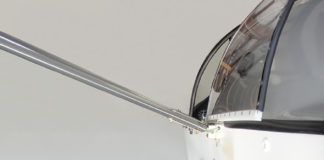
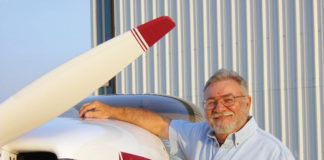
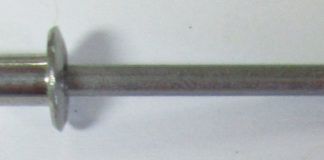
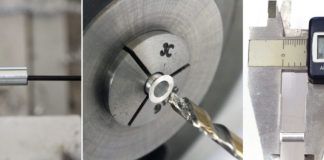
What about using a borescope, which is now standard operating procedure for Continental engines?
A borescope is useful for checking the cylinder bore for crosshatch and the exhaust valve for burning. But only after doing the cylinder pressure test.
If you get a low reading, it’s important to listen to where the air is leaking.
Take the oil fill cap/ dipstick out. If you hear the hissing here, the air is leaking past the rings, so try the ‘ hot test ‘.
If the air is hissing out one of the exhaust stacks, it’s leaking past the exhaust valve. Try the running the engine, in case there is some carbon between the valve and the seat.
Continentals tend to wear the exhaust valve guide if run too rich, with the lead depositing on the valve stem and wearing the guide.
BTW, TCM doesn’t care about the differential pressure readings. If the engine makes full static power and has oil use less than the limit, it airworthy.